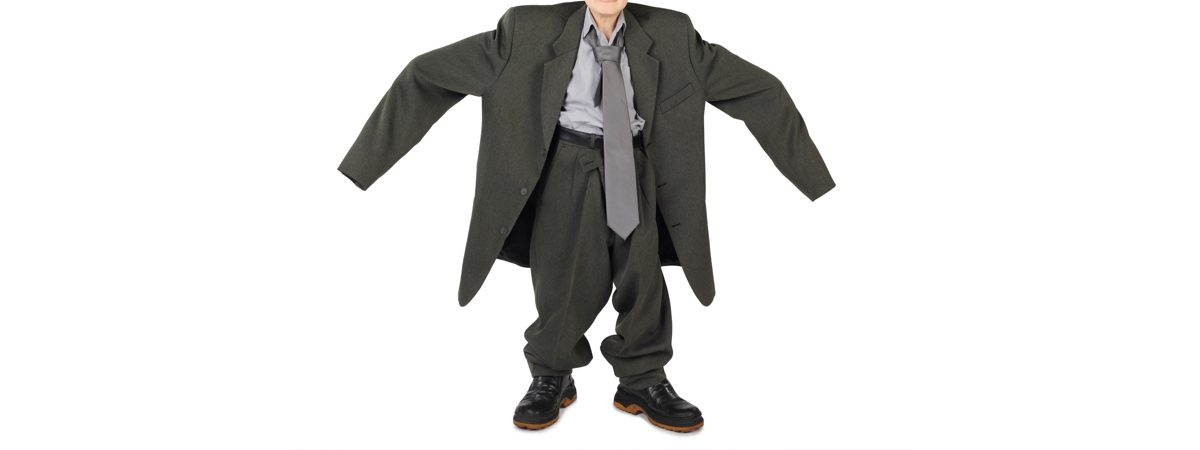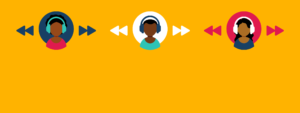Let me share two widely held orthodoxies in the podcast industry:
- Podcast ads outperform nearly any other kind of ad
- Host-read ads are the best kind of podcast ad
Now, there are many, many reasons to complicate these propositions. However, they are repeated widely enough to say that many people think they’re true much of the time.
I posit these not as straw men, but instead to put on my best David Byrne big suit and ask myself, “how did we get here?”
I don’t think anyone would argue that these two beliefs aren’t related. In fact, they are very closely tied together. But I’ll also argue that this is not the result of some kind of careful large-scale experiment or a divine plan. Rather, as I said to E.B. Moss on Insider Interviews, they’re the result of happy, historical accident.
How Host Read Ads Came to Rule the Podcast Roost
Let’s turn back the clock ten years to September, 2013. Podcasting was a decade old, Serial was still a year away, Gimlet was still just a twinkle in Alex Blumberg’s eye, and Welcome to Nightvale was #1 on the US iTunes chart, where public radio shows occupied a full six positions in the top 10. After quite a few years of debate about how podcasts might be monetized, the still-nascent industry had largely settled on advertising.
However, compared to other internet media, podcast ads were downright primitive. Lacking widely available ad technology (Soundcloud was a popular hosting platform, for Pete’s sake), the vast majority of podcast ads were baked in, recorded live on-the-fly by hosts as they did their thing (Marc Maron being one of the masters of that approach) or edited in by hand, often just prior to release. Lacking creative studios, and working with emerging direct-to-consumer brands outside the major ad agencies, this simple strategy was a practical necessity – and it got the job done.
I began working at one of the first podcast ad networks, Midroll Media, at the beginning of 2014, and I can recall the occasional mad scramble to get ad copy to a host before they finished recording, to be sure it made it into the week’s episode. That’s just how things worked.
Still, even then it was not the case that every podcast ad was host-read. Quite a few hosts did not or could not read ads – often due to journalistic or contractual constraints – so announcers took their place. As a listener it also was possible to encounter pre-recorded ads, including ones obviously re-purposed from broadcast radio. Nevertheless, on balance, the baked-in host-read ad was predominant in podcasting – followed closely by similar-sounding announcer-reads – becoming a de facto standard.
But make no mistake, this was not by design. It was happenstance. A successful happenstance, by the way. So successful that many brands continue to prefer host-read ads today, even with the advent of sophisticated ad tech and a variety of ad products.
What’s the Secret to this Successful Formula?
While we can see how we got here, one big question remains: why was this such a successful formula?
As much as I believe in podcasting, I do not posit that the medium is somehow inherently magical for advertisers. I do not accept podcast exceptionalism.
Let’s imagine a case based on real events (“the names have been changed….”). An advertiser new to the medium is testing podcasts by repurposing their radio creative on a programmatic buy. When the results don’t end up outperforming other audio channels, do they come back for another trial, or just conclude podcasts aren’t worth the premium?
If you’re me, you understand that the ad creative is an important factor, and you want to tell the brand they might be doing it wrong. But if you want them to listen, you’re going to need evidence to show them why.
Podcasting has become too mature to rely on orthodoxy and well-informed opinions to guide critical planning and strategic decisions. Host-reads often are fantastic, but I’ve run studies where announcer-reads generated more lift. Buyers and brands that haven’t been steeped in podcasting for the last decade can’t be expected to take our word for it. We can’t expect it to be the same as it ever was.
The good news is that this is a solvable problem. We have the technology to test and uncover what makes the ad inside a podcast like peanut butter in chocolate – two great tastes that taste great together (and outperform other channels).
What we need is for podcasting’s stakeholders to invest in this research, to firm up the foundation and create the guidebook that turns our happy accident into repeatable, scalable success. We can have our beautiful peanut butter in chocolate, and eat it, too.




